As the global population reaches new heights and available land diminishes with city development, it’s absolutely vital that we safeguard our healthy agricultural regions to sustain future generations. Unfortunately, due to a process called soil salinization we are facing a major threat to sustaining arable land.
Salinization occurs when water-soluble salts accumulate in the soil, leading to a series of environmental problems such as land degradation, reduced crop yields, and contaminated freshwater. What’s worse is that the process to reverse salinization is resource intensive and rarely effective, making most impacted regions permanently unusable.
This global threat isn’t contained in any one area – some of the notable regions where salinization has been recorded include the Yellow River Basin in China, the Euphrates Basin in Syria, and the Murray-Darling Basin in Australia. In fact, some studies have estimated that 50% of Earth’s arable land could be salinized by the year 2050.
Soil Salinization has been well understood throughout human history and is known to result from natural and anthropogenic causes. Thanks to years of negligence, we are at a point where we can no longer afford to overlook this problem. While natural causes for salinization, such as dry climates and high evaporation rates, are generally out of our control, we still have an obligation to minimize human-induced causes.
In this article, we’re going to present the causes of salinization,why we should care about this problem and what we can do about it. So, if you’re interested in learning more about saline soil, just keep on reading!
Anthropogenic Causes of Salinization
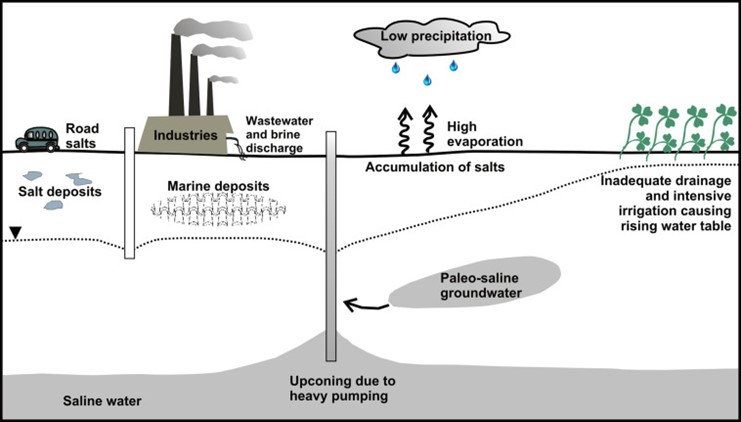
Illustration of how salt accumulates in soil and groundwater due to inadequate drainage, low precipitation, high evaporation, and industrial waste
Poor management practices such as over-irrigation, inappropriate application of fertilizers, and poor water drainage all contribute to higher soil salinity. Human activity that perpetuates the warming of our planet, also indirectly leads to soil salinization thanks to rising sea levels flooding crop fields. It’s time we become mindful of these actions, since they not only harm our soils but they inadvertently cause food and water insecurity around the world.
Before we examine the various consequences of salinization, let’s first understand how it’s measured.
There are many different procedures used to determine the salinity of soil, which can be employed in the field and in the lab. For the sake of simplicity, we’ll only be considering electrical conductivity (EC), which is the most common form of soil salinity measurement. Since salts break down into positively and negatively charged ions, soils with higher EC imply higher levels of salt concentration.
Why Should We Care About Soil Salinization?
Impact on Crops
The effects of soil salinization on crops are akin to that of droughts. When soils have high salt content, they disrupt a plant’s ability to absorb water through osmosis. Even if soil has an adequate amount of water, plants that grow on highly salinated land are unable to retain water and will usually die of dehydration.
Another problem induced by salinization is nutrient imbalance. This process, known as antagonism, occurs when excess uptake of one ion conflicts with the absorption of another. For example, too much chloride in the soil will lead to excess chloride in the plant and that, in turn, prevents the plant from consuming nitrates.
This is ultimately harmful because nitrates are necessary for the plant to generate amino acids and conduct other processes. Unfortunately, this is the better of the two possible outcomes. Some plants will just die as a result of ion toxicity, especially from chloride. The same thing happens with soil organisms resulting in the loss of soil biodiversity.
It is worth mentioning that salt tolerance differs among crop types. While some crops, such as rice and corn, are poorly equipped to handle salinity, others, such as barley and oats, are more tolerant. Sadly, higher levels of tolerance doesn’t imply complete immunity. One study conducted in Canada found that both barley and oat yields began declining once EC levels reached 4.0 mmhos/cm. Given these facts, the future for global crop yields looks grim if we don’t take action to prevent salinization.
Impact on Water Quality
Freshwater has a major presence in agricultural regions, irrigation systems, and underneath crop fields; therefore, it’s only natural that salinization would take a toll on freshwater quality as well.
Many rural areas that depend on nearby rivers for drinking water are facing severe salt contamination and are at risk of losing their livelihoods. Thi Tran, a young woman that lives in one of the coastal villages at the southern tip of Vietnam’s Mekong River delta, voiced some concerns about this issue. She fears for her family because they can’t grow rice or access fresh drinking water due to increased salinization.
Although her interview doesn’t mention which salts may have infected her area, it’s worth mentioning that chloride is one of the worst water contaminants. This is because humans are especially sensitive to the taste of chloride in water, compared to other ions, which can hinder one’s ability to stay hydrated.
Other Impacts of Salinization
Another major consequence of salinization is the impact it has on life below water. One experiment studied a dozen freshwater species in Nevada and showed that many animals are extremely sensitive to changes in salt levels and can perish from salt overdoses.
Salinity in water and soil can also corrode machinery and infrastructure, making them less durable over time. In rural areas where infrastructure is expensive to build and maintain, this can have particularly severe economic consequences for residents.
What We Need To Do
While there are many procedures that can help minimize salinity, most of them are quite expensive and can’t guarantee success. That doesn’t mean we shouldn’t invest in those solutions but that these alone aren’t enough. Some of these techniques include the following:
- Improving the efficiency of irrigation channels
- Removing salt crystals from the surface mechanically
- Capturing and treating salty drainage water
- Periodically monitoring salt levels in soil and groundwater
In addition to these, we at the Chloride Free Foundation believe that the biggest change we can make is in our fertilizer usage. As we’ve mentioned throughout this article, chloride is one of the most damaging chemicals in agricultural practices. It restricts the absorption of water and necessary nutrients in some plants, it can be extremely toxic in others as well as in soil organisms, and it quickly contaminates the taste of drinking water. For this reason, we advocate for the minimization of chloride in agriculture and instead promote the usage of natural fertilizers.
Now you may be wondering how you can contribute to this movement, if you aren’t directly involved in farming and irrigation. Luckily, the change begins from international consumers like you. Begin supporting your local coffee brands that meet our chloride-free standards and educate your community about this urgent issue so they can do the same. You can also volunteer for our movement by signing up on our website. It’s time we all became mindful of our actions and put an end to the contamination of Earth’s natural resources.
Below there are some other articles that you might be interested in:
- Soil: Vital but Fragile
- Soil Biodiversity Might Just Be the Answer to Our Climate Prayers
- Reversing Climate Change: How can we boost Carbon Removal?

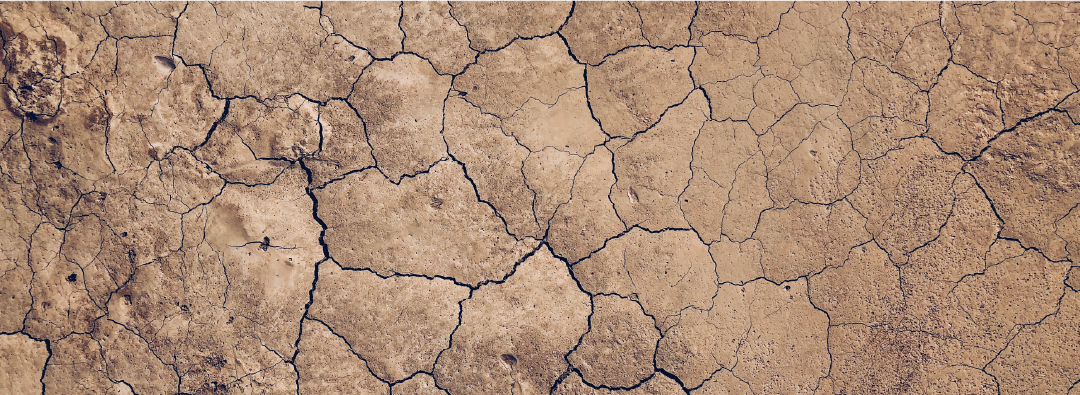
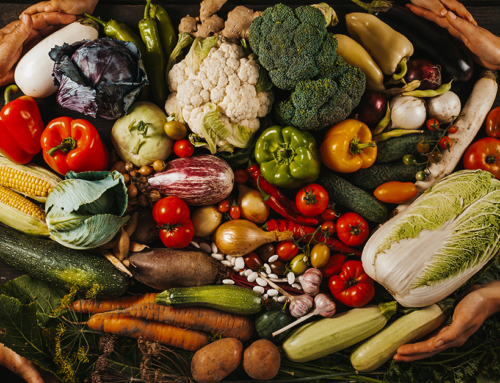
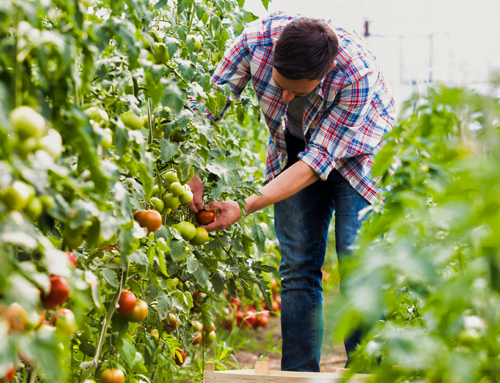
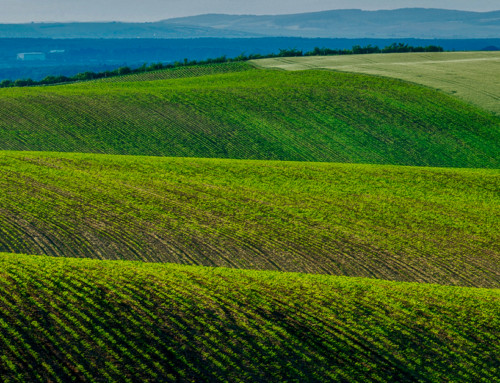
Leave A Comment